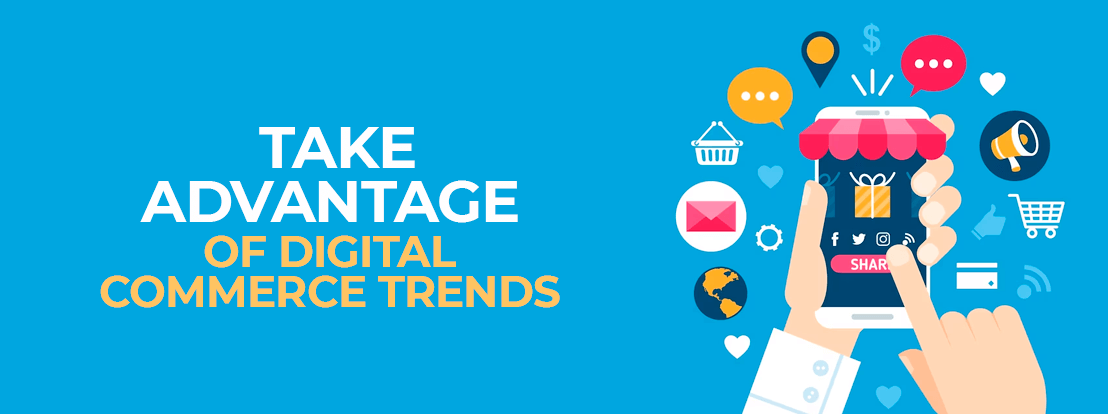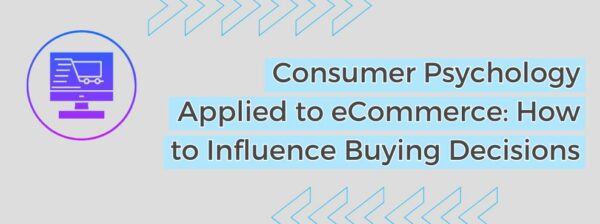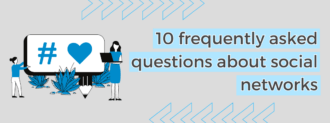Every year, different companies publish their studies on the situation and future ecommerce trends. In this post we collect the most important data and add our own tips on how to boost your online business making use of all these data and trends.
The information used is from studies conducted by IAB Spain-Elogia, EAE Business School and SEMrush. Knowledge is power! So read on.
Table of contents
- 1 Ecommerce trends of the future
- 2 Boost your business using ecommerce trends
- 2.1 what factors come into play when choosing e-commerce?
- 2.2 why do Internet users buy online?
- 2.3 on what devices are online purchases made?
- 2.4 what are the most popular online purchases?
- 2.5 where do consumers get information before buying in your online store?
- 2.6 how do users prefer to ask their questions when they have doubts?
- 2.7 Other interesting facts about the state of e-commerce and its trends for 2018
- 3 Conclusion
Ecommerce trends of the future
The digital economy does not stop growing: in 2021 e-Commerce will already account for more than 15% of the global market share. If we talk about e-Commerce in Spain, the number of customers between 2010 and 2017 has doubled, which is no small feat!
In fact, 74% of Internet users aged 16 to 65 already shop online.
The autonomous communities that make most use of ecommerce are Navarra and the Community of Madrid, while Extremadura and Galicia are well below the national average (which is 54.7%)
It has been found that:
- The number of buyers who make exclusive use of the online channel has increased to 17%. Especially in the 16 to 30 years age group, which represents 25%. So if you are considering setting up an online storeand your target is in this age group, it is a good idea.
- Spaniards have increased the average amount they spend online: now it is 80€. And they also shop more frequently (2.9 times a month). Men are the ones who spend more on each purchase, so if your target is mostly male, do not hesitate to offer them upselling or cross-selling options.

Boost your business using ecommerce trends
what factors come into play when choosing e-commerce?
Delivery time continues to gain momentum. In 2017, it was already the first element by which one e-commerce or another was chosen. In addition, the trend continues to be that consumers are willing to pay more in order to have their orders sooner. Therefore, do not neglect this factor in your online store.
Other reasons why the user chooses to buy in one online store or another, are:
- price (82%)
- shipping characteristics (79%)
- trust (77%)
- after-sales service (76%)
- the variety of offers available (75%)
In other words, study your competitors and assess how they are positioned in all these aspects, and above all, how you can beat them. Is your price competitive? Do you give them enough shipping options? Do you think that once the sale is made, there is nothing more to talk about? Do you have a sufficiently varied product catalog?
why do Internet users buy online?
There are 73% of users who, despite being able to go to the physical store and have the product immediately in their hands, choose to buy online. The main reason is convenience, as well as not coinciding with store opening hours, the store being too far away or the offer being exclusive to the online store. In this order:
- convenience/practicality (98%)
- the large assortment/offering available in the channel (97%)
- price (93%)
As we can see, any ecommerce study shows that people prefer to shop from home because they can do so at any time and without having to travel. Note that this factor is even higher than the price.
If we go to the opposite extreme, to find out why users do not buy online, the conclusions are as follows:
- shipping costs. We advise you to set at least a minimum purchase amount, from which shipping is free. This will increase the average of your basket and will also eliminate this negative factor.
- not being able to see and touch the product. That is why we never tire of telling you that it is VERY important to have good quality photos of the products, from different angles, so that the material, color, etc. can be appreciated. And if you add a video, at least for your star products or the ones you want to promote… we have a winner!
- rETURNS. Not knowing exactly what you are going to receive, and if you are going to be able to return the product if you don’t like it. Make it easy.
on what devices are online purchases made?
According to ecommerce news, as of today, the majority of purchases are still made on the computer (95%). But watch out, because 4 out of 10 young profiles buy via smartphone. So if you are targeting this young target, make sure that the design of your ecommerce is well adapted to mobile.
It is curious, however, that despite how much we use the cell phone (most of us live glued to that small screen, isn’t it?) we hardly buy on that channel. Why don’t we buy through the mobile?
- inconvenience and impracticality (56%)
- followed by the size of the screen (17%)
- and lack of security (12%)
You have to see it as an opportunity. Improve your ecommerce experience on mobile as much as you can. And it is not about making the elements of your online store smaller to fit, but to make them optimal: the buttons have to be big enough, for example.
If you work in the leisure, fashion and tourism sectors, these are the sectors that have seen the greatest increase in mobile shopping. So pay special attention to this issue.
And above all, make it very clear that all the information that the customer is going to send as a payment method is secure.

what are the most popular online purchases?
The most important increases in online purchases have been in sectors such as tourism, leisure and the sale of mobile devices. But fashion, food and home are also an area of interest. Not forgetting that technology, footwear and accessories are on the rise:
- travel and leisure/culture are the undisputed leaders
- technology and apparel/accessories products
- and a significant increase in digital content purchases (from 36% to 47%)
Therefore, if your ecommerce is dedicated to any of these sectors, you are in luck. However, keep in mind that it also means that they will be increasingly competitive, and you will have to solve the problem of standing out from the rest if you want your potential customers to find you online. At this point, it is very important that you work on the SEO of your online store.
Don’t get us wrong, working on SEO is always important. But in competitive niches and sectors, even more so.
where do consumers get information before buying in your online store?
It used to happen a lot that users would go to see or look for information about a product in a physical store, and then buy it online. Up to 39% of people did this. According to the latest reports, in 2017 only 5% do this. Impressive, isn’t it?
That’s why it’s very important that your product cards have all the necessary information. They can determine that a purchase is carried out, or not.
If we want to reflect with data this reality about where Internet users look for information before buying online, they would be the following:
- on the brands’ websites (especially those over 45 years old)
- advice from family and friends (especially those between the ages of 25 and 34)
- blogs and opinion forums (those aged 25 to 44)
Although it is really the last two that have the most influence when deciding to make a purchase. So depending on the age of your target, you will have to adapt your strategy to gain their trust.
If your target is between 25 and 34 years old, recommendations and opinions on your website will probably work very well, although we know that they are difficult to achieve. That’s why we give you some tips.
If your target audience is more towards the 40s, it may be interesting to move through blogs and forums, giving rabbits, leaving information, etc.. This way they will at least get to know you.
how do users prefer to ask their questions when they have doubts?
And what is more important, which communication channels should we pay more attention to in order to provide good customer service in this regard.
- The mail or email is without any discussion the most used. So it is necessary that you give quick answers to queries that may arrive to your online store’s email. Many times you can use standard replies, but always try to personalize them, even with the name of the person who asks you.
- Followed by the telephone number, although far behind. Even so, it is important that the phone number is visible in your ecommerce, because a person who calls you, if well managed, can mean a sale closed at the moment.
- Chat and whatsapp have not yet taken off. In addition, these two media are super immediate response. So if you are not going to be able to use them correctly, it is better not to implant them. But otherwise, they can also be a good conversion opportunity.

Other interesting facts about the state of e-commerce and its trends for 2018
Although they don’t have their own section, they are still important. If they can’t pay you, there is no purchase. And if users do not reach your online store, there is no purchase. So don’t miss out on what are the preferred payment methods, and the main sources of traffic for ecommerce, according to studies.
Preferred payment methods:
- the use of paypal is recovering, preferred in the 35-44 age group.
- debit card is in second place.
- end-of-monthcredit card is the most used by people over 45 years old.
In this post we give you information about the best payment methods.
Ecommerce traffic sources:
- direct traffic: they know your brand and search directly your ecommerce on the Internet, putting the name in the navigation bar.
- search traffic: they are looking for the product you have, so it is important that you have a good SEO work.
- referred traffic via links from other websites (except for sports, entertainment and flowers)
- social networks, so, although users do not directly make purchases on social networks, it is useful to be on them for your branding, building trust, etc.
In any case, we leave as a note that the experience of those who have purchased through social networks is positive in 49% of cases. And some of the reasons why others do not buy, is because they have not found any product or service to buy, or because they did not even know that you could buy in networks.
Maybe you can test a product and see how it works. Look at the trends of Facebook Shops, o Instagram Shopping, and how they serve to channel sales.
Conclusion
These studies on ecommerce situation and trends are based on surveys and sampling, so everything is relative, and you can not generalize on certain things.
But it is clear that there are patterns of behavior, and that there are always certain trends to take into account. So we hope you can use all this information to your advantage.
Remember that you can consult the three studies, in full, at IAB Spain and Elogia, EAE Business School and SEMrush.
If you have any doubts or contributions, don’t hesitate to leave them in our comments!

Related Posts










Deja un comentario